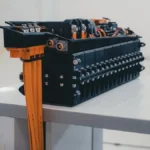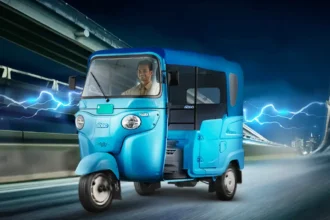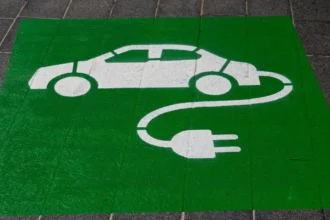What if the perfect car for crowded city streets was actually smaller than your living room? A Japanese startup called KG Motors thinks they have found the answer with their revolutionary tiny electric vehicle. According to Bloomberg, this bold company plans to challenge automotive giants with a single-seat electric car that costs half the price of current electric vehicles.
Understanding the Mibot Revolution
The mibot represents a completely different approach to electric transportation than anything you have seen before. Kazunari Kusunoki, the 43-year-old founder of KG Motors, designed this vehicle to be fundamentally different from traditional cars. Instead of trying to make electric versions of regular cars, his team created something entirely new.
| Size and Design | The mibot measures only 1.1 meters wide and 2.5 meters long, making it smaller than most parking spaces. This ultra-compact design allows it to navigate Japan’s narrow streets where regular cars struggle to fit. |
| Performance Specs | With a 100-kilometer range and 60 km/h top speed, the mibot handles daily commuting needs perfectly. The 5-hour charging time means you can plug it in overnight and drive all day. |
| Smart Features | Despite its simple design, the mibot includes modern technology like an 8-inch touchscreen, air conditioning, and over-the-air software updates. Future versions will even have autonomous driving capabilities. |
Why Japan Needs This Tiny Car
Japan faces unique transportation challenges that make the mibot particularly relevant. Kusunoki explained that “cars are simply too big” for Japan’s infrastructure, and his observation reflects deeper societal problems that need solving.
- Aging Population Crisis: Rural Japan’s elderly residents often lose access to transportation when they can no longer drive large vehicles safely. The mibot’s simple controls and compact size make it easier for older adults to maintain their independence.
- Crumbling Public Transport: As Kusunoki noted, “public transport systems are in shambles” in rural areas. The mibot provides affordable personal transportation where buses and trains no longer operate efficiently.
- Infrastructure Limitations: Japan’s narrow streets, built centuries ago, cannot accommodate modern large vehicles easily. The mibot’s tiny footprint allows it to navigate these historic pathways without causing traffic congestion.
The Business Strategy Behind the Innovation
KG Motors chose a radically different business approach compared to major automakers. Their ¥1 million price point (approximately $7,000) represents half the cost of existing electric vehicles, making electric transportation accessible to average Japanese families for the first time.
The company’s make-to-order strategy eliminates the massive factory investments that traditional automakers require. By producing only what customers have already purchased, KG Motors reduces financial risk while keeping prices affordable. They plan to manufacture 10,000 units annually after delivering their first 3,300 vehicles by March 2027.
This approach has already proven surprisingly successful. The company received 2,250 pre-orders, with over 95% coming from homeowners who plan to use the mibot for daily local transportation rather than long-distance travel.
Competing in a Crowded Market
The mibot enters Japan’s challenging electric vehicle market, where EVs represent only 3.5% of total vehicle sales. Unlike Toyota’s multi-pathway approach to green transportation, KG Motors focuses entirely on ultra-compact electric mobility. This specialization allows them to serve a specific market segment that larger manufacturers often ignore.
While companies like Toyota, Nissan, BYD, and Hyundai compete with traditional-sized electric vehicles, the mibot creates its own category. This strategic positioning helps KG Motors avoid direct competition with automotive giants who have vastly more resources.
The mibot’s success could reshape how we think about urban transportation. If this tiny electric vehicle proves popular, it might inspire other manufacturers to create similar ultra-compact solutions. Will Japan’s narrow streets become filled with these futuristic golf carts instead of traditional cars?











